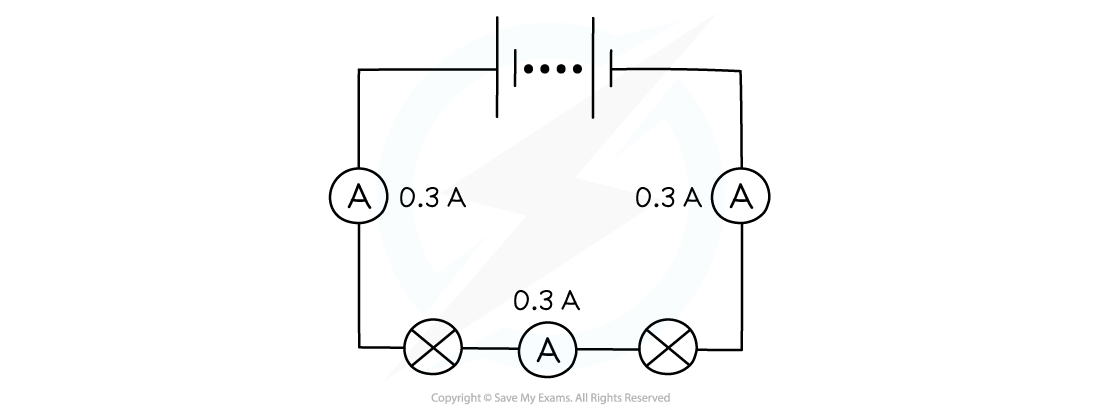Step 1: Recall that at a junction, the current is conserved
- This means that the total amount of current flowing into a junction is equal to the total amount flowing out
Step 2: Consider the first junction in the circuit where current splits
- The diagram below shows the first junction in the circuit

Step 3: Calculate the missing amount of current
- Since 10 A flows into the junction (the total current from the battery), 10 A must flow out of the junction
- The question says that 6 A flows through ammeter A1 so the remaining current flowing through ammeter A2 must be:
10 A − 6 A = 4 A
- Therefore, 4 A flows through ammeter A2




 What is the reading on ammeter A2?
What is the reading on ammeter A2?
